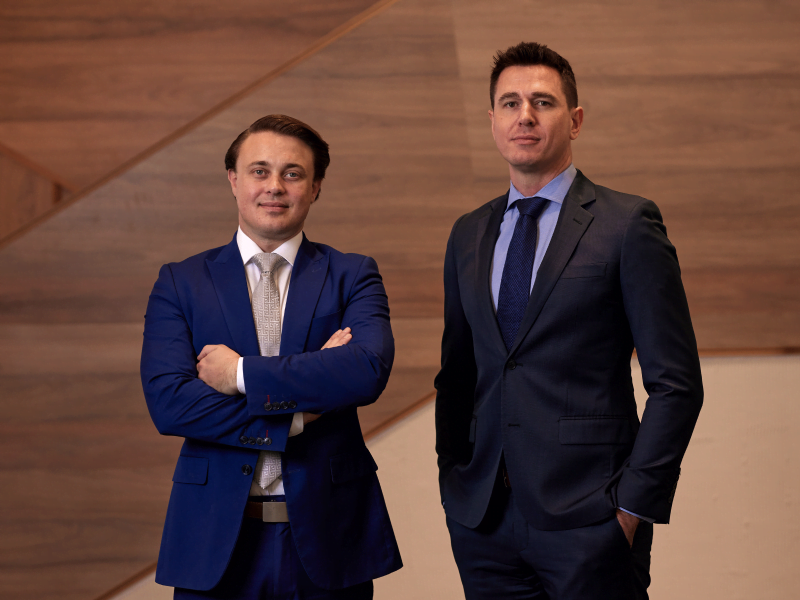AI robotics company Advanced Navigation is vying to be the first Australian company to reach the moon onboard NASA’s Artemis mission by 2024.
The company announced a deal with US-based space systems firm Intuitive Machines on Monday related to Advanced Navigation patented technologies that will be on board lunar landers that are expected to undertake four moon landings and deliver two lunar communication relay satellites by 2025.

This includes delivering science investigations and a technology demonstration to the Moon in 2024 as a part of the NASA’s Commercial Lunar Payload Services initiative, the Tipping Point technology opportunity, and the Artemis program to return astronauts to the moon.
Advanced Navigation technology will be onboard the first Artemis test mission, expected to be run at the end of this year, to collect data before the systems are commissioned.
Intuitive Machines chief technology officer Dr Tim Crain said that he hopes to demonstrate the viability of Advanced Navigation’s technology through its Nova-C. This will lead to the installation of the technology in its upcoming Nova-D lander in 2026. This will deliver payloads of up to 1000kg, more than ten times the capacity of Nova-C.
The two navigational systems were initially developed at the Australian National University (ANU) and RMIT University before being commercialised by Advanced Navigation.
Advanced Navigation chief executive and co-founder Xavier Orr said the company is always looking out for new navigation technologies and that they were unique in their willingness to commercialise it.
“There definitely are other companies out there that are looking at these partnerships with universities and commercialising technology that they’ve developed, but [Advanced Navigation is] really aggressive with that approach. We really recognise the high quality of research going on at these institutions and look to where we can commercialise that,” Mr Orr said.
Advanced Navigation estimates that their lightweight navigation technology will provide more precise measurements and generate $85 million in cost savings for Intuitive Machines. Part of these savings come from freeing up weight on a spacecraft for more commercial payloads such as satellites, research and test equipment, or personnel. Its low weight also makes the two technologies suitable for deployment on mini-extreme mobility lunar vehicles known as hoppers.
The technology behind the light detection altimetry and velocimetry (LiDAV) system was initially spun out of the Gravitational Research Lab at the ANU by Vai Photonics in 2021 before the company was acquired by Advanced Navigation in May this year. The research has been undertaken over more than 15-year period.
The LiDAV system can precisely indicate a vehicle’s velocity and position relative to the lunar surface. It can also serve as the primary navigation input in the absence of visual references and when cameras fail due to lack of light, dust and other obscurities. This is necessary to perform complex autonomous landing procedures Advanced Navigation says.
Technology behind the Boreas X90 inertial navigation system was developed in partnership with researchers at the Integrated Photonics and Applications Centre at RMIT University as well as at the ANU over a 20-year period. Boreas X90 can provide precise positioning and navigation without using relatively fixed references, such as stars, or requiring base station control telemetry.
Mr Orr also said that an expansion of the federal government’s Cooperative Research Centre Projects Grants program would be “really helpful” for boosting the commercialisation of research. He also said it was important to ensure deep tech labs such as those at RMIT and ANU to ensure Australia is at the forefront of technology development.
Advanced Navigation was a previous recipient of more than $690,000 through the federal government’s Moon to Mars Supply Chain Capability grants program for development on the Boreas X90 inertial navigation system. This was undertaken in partnership with quantum technology firm Q-CTRL.
Australian Space Agency head Enrico Palermo said that this announcement was evidence of an ongoing successful partnership between Australia and NASA.
“It’s great to see Advanced Navigation continue to disrupt and challenge the status quo. Their latest technology will not only increase Australia’s space capability, but create exciting long-term export opportunities, bolster careers in the STEM sector and inspire the Australian public,” said Palermo.
“This is just one example of how Australia is collaborating with NASA on its Artemis program and is building on over half a century of collaboration in space. The Agency has also reached an agreement with NASA for an Aussie designed, built and operated rover to be included in a future mission.”
The United States Artemis accords were signed by Australia in October 2020. The Morrison government committed $150 million to the Moon to Mars Initiative to help local Australian space firms build the capability needed to participant in the Artemis missions.
Former Prime Minister Malcolm Turnbull was appointed to the board of Advanced Navigation in August 2021.
Do you know more? Contact James Riley via Email.

